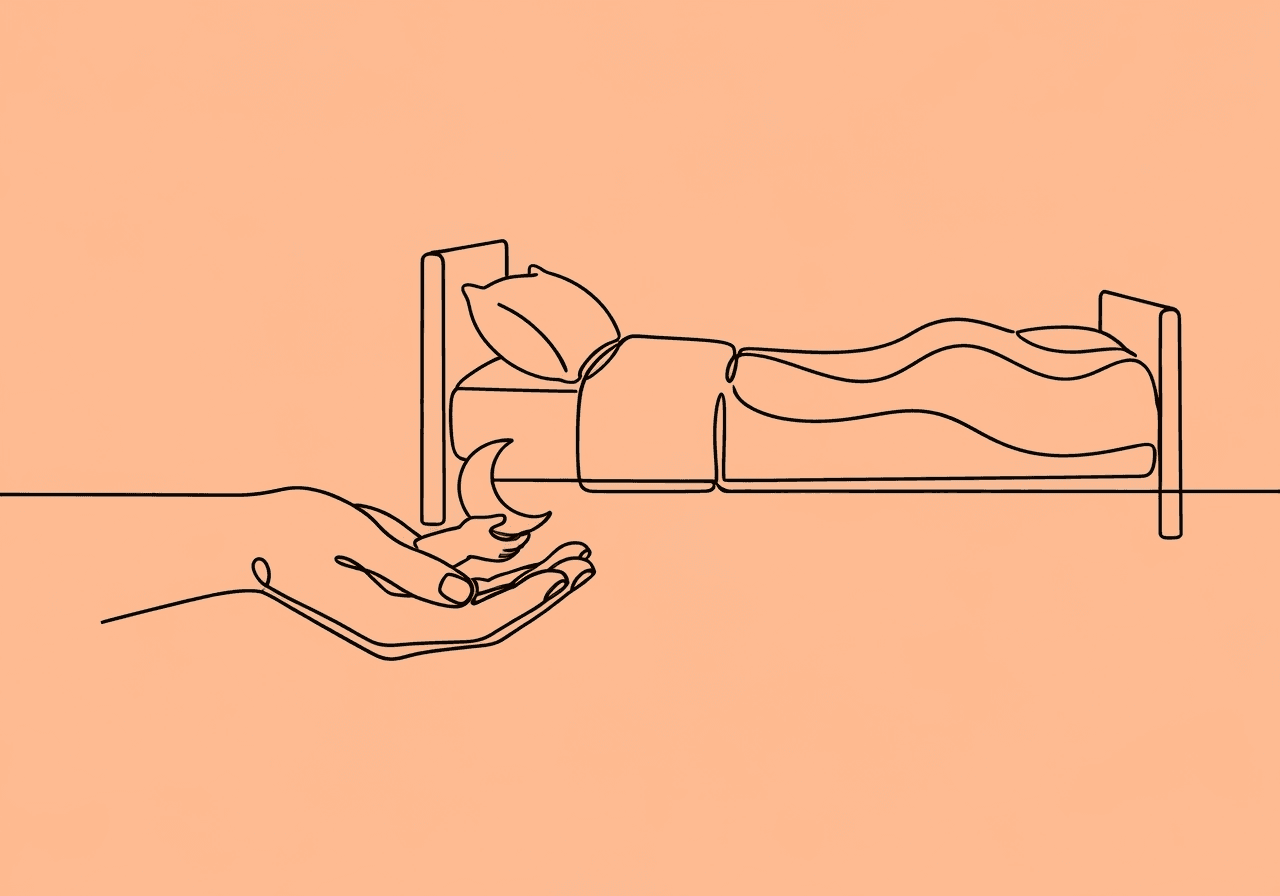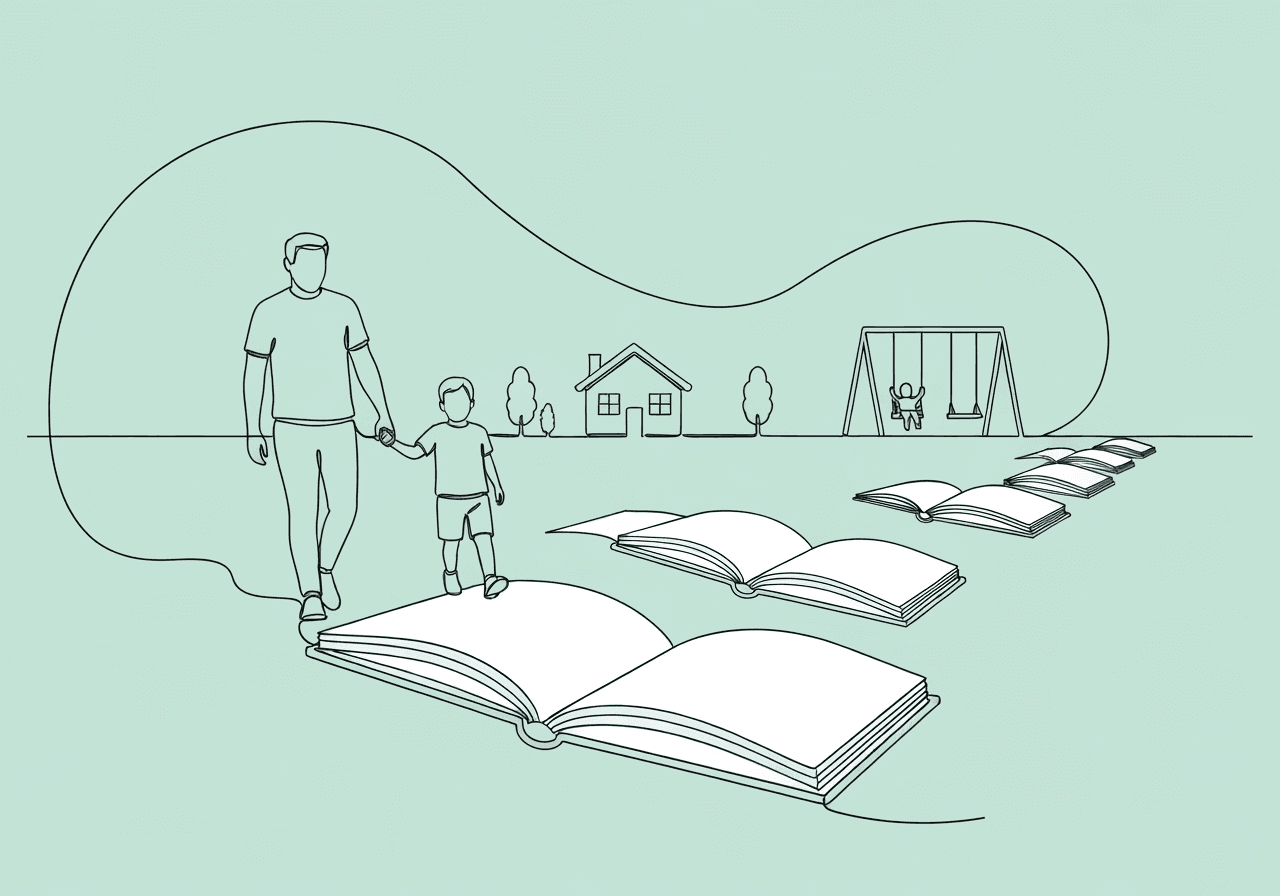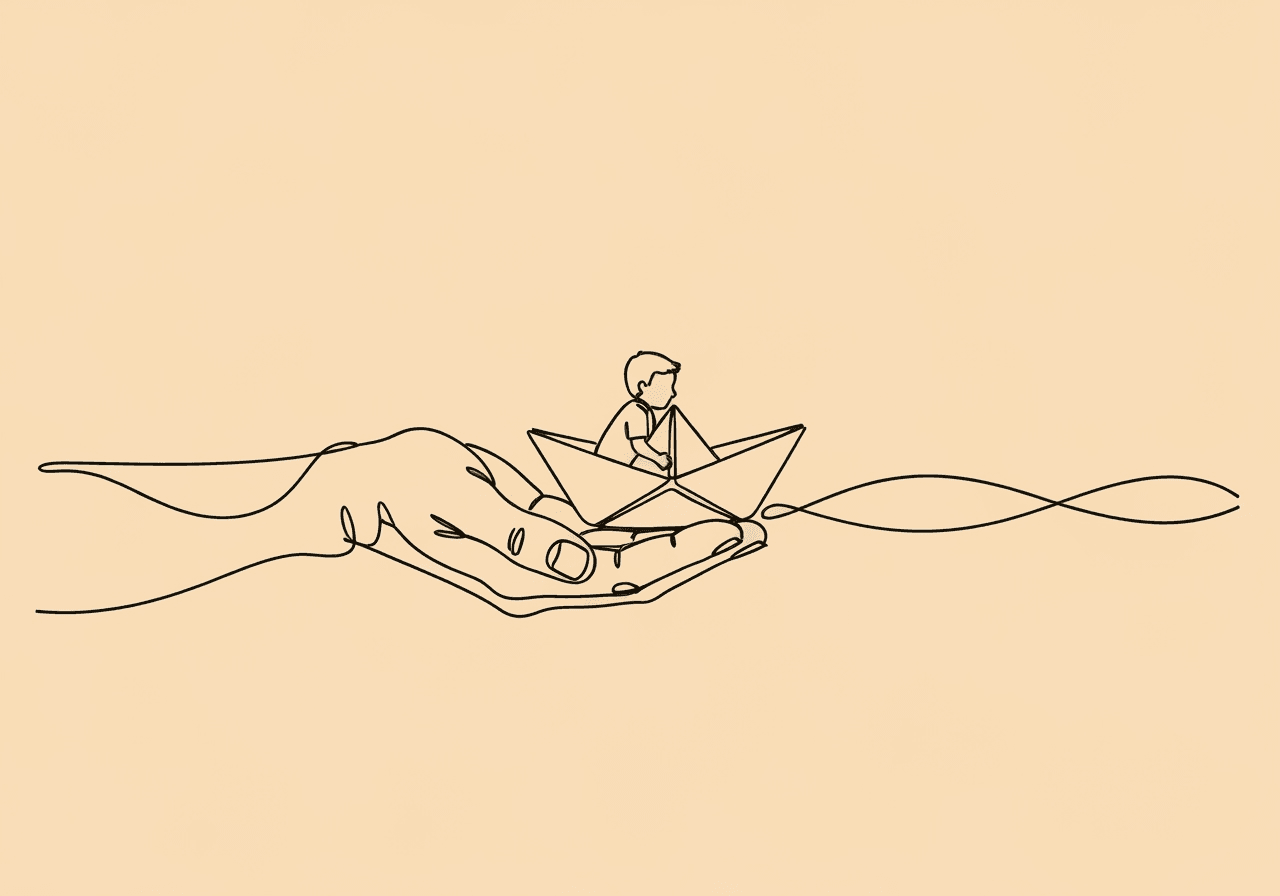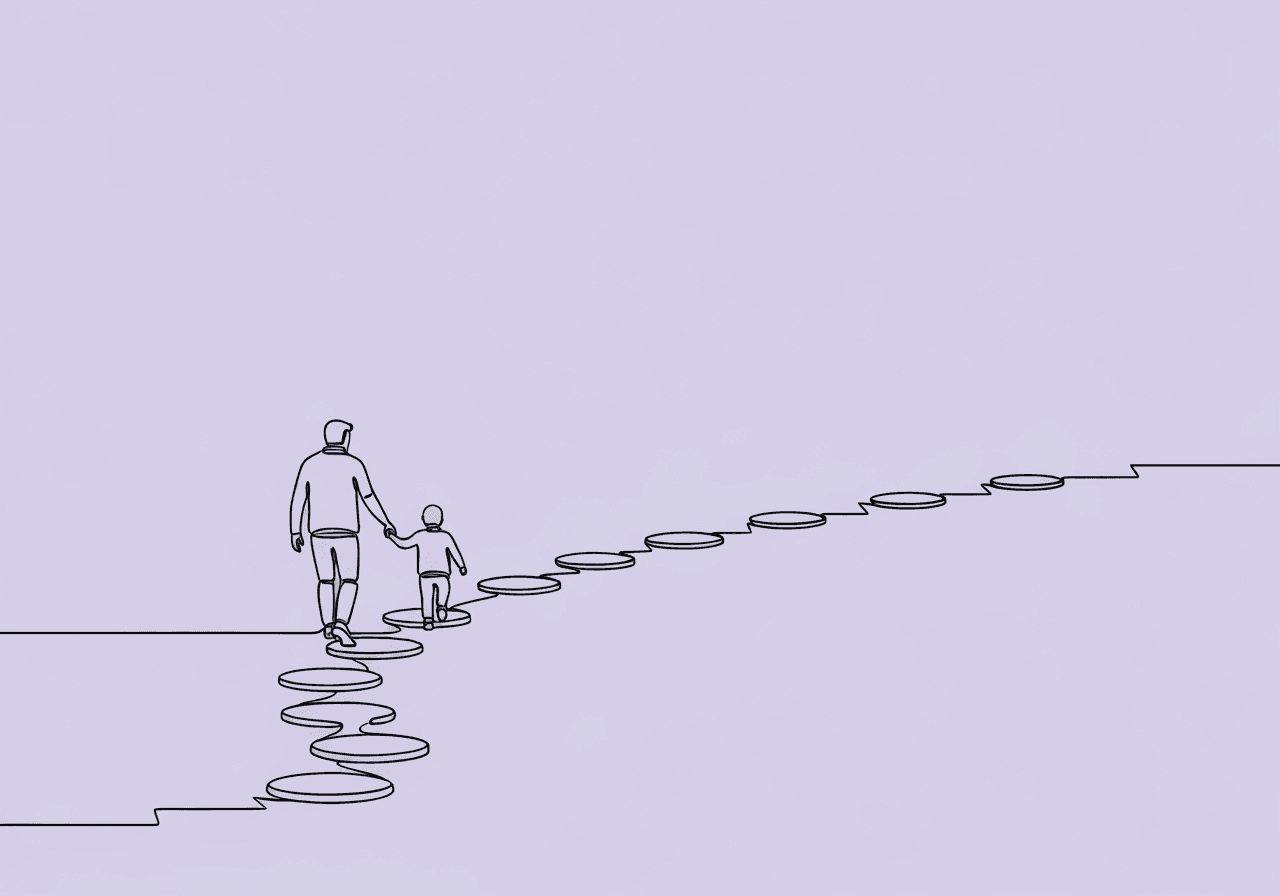Effective ABA Sleep Routine for Parents of Autistic Children

Imagine lying awake night after night, listening to your child's distress as bedtime turns into a battle. For many families of autistic children, this scenario is all too common. Sleep disturbances affect 50-80% of kids with autism spectrum disorder (ASD), a rate far higher than the 20-30% in typically developing children. These issues often include trouble falling asleep, frequent night wakings, and irregular schedules, leading to exhaustion for everyone involved. As parents navigating ABA therapy, you have powerful tools at your disposal.
This guide introduces an ABA sleep routine for parents designed to address these challenges with evidence-based behavioral strategies. By implementing these, many families report improved sleep quality and stronger family bonds.
Here are a few key takeaways you'll find in this guide:
- Sleep is a Learned Skill: ABA principles can shape your child's sleep habits through consistency and positive reinforcement.
- Consistency is Crucial: A predictable bedtime routine with visual aids can significantly reduce anxiety and resistance.
- Data-Driven Adjustments: Using a simple sleep log helps you and your BCBA make informed decisions to improve your child's sleep.
- Gentle Strategies Work: Techniques like stimulus control and graduated extinction offer compassionate ways to manage night wakings.
Why Are Sleep Issues So Common in Autism?
Sleep problems strike at the heart of daily life for many autistic children and their families. In fact, a recent review shows that over 80% of children with ASD face clinically significant sleep disturbances, compared to much lower rates in their neurotypical peers. With the CDC noting that ASD prevalence is now one in 31 children, the need for targeted interventions like ABA is clear.
These issues can persist into adolescence and adulthood if left unaddressed, impacting behavior, learning, and emotional regulation. Common disturbances include delayed sleep onset, restless sleep, and early awakenings. Parents often overlook how co-occurring conditions, like anxiety or sensory sensitivities, contribute. This is why many experts emphasize screening all autistic children for sleep issues during routine check-ups.
How Can Behavioral Science Improve Sleep?
In ABA, we view sleep not as an innate reflex but as a skill shaped by our environment and routines—much like any behavior your child learns in therapy. Sleep disturbances can be understood as behaviors maintained by inadvertent reinforcement, such as extra parental attention during night wakings. A recent review on behavioral sleep interventions confirms that treating sleep this way yields lasting improvements, often without a need for medication or complex melatonin alternatives.
Picture your child learning to tie their shoes; sleep works similarly, shaped by daily cues and rewards. Because some autistic children may struggle with self-regulation, positive routines help build associations between cues like dim lights or certain sensory bedtime aids and the feeling of relaxation, reducing resistance. By understanding sleep as a learned behavior, families can shift from feeling frustrated to using proactive strategies. For more on applying these principles, see our guide on ABC Data for Parents.
How Do You Create a Consistent ABA Bedtime Routine?
To start your ABA sleep routine for parents, break bedtime into a sequence of predictable steps. Using a visual schedule can reduce anxiety by making the routine clear and predictable, as highlighted in the Autism Speaks Sleep Tool Kit.
- Establish a Clear Sequence: Begin with 4-6 simple steps. For example: dinner, then a warm bath, put on pajamas, read a favorite story, and finally, lights out.
- Create a Visual Schedule: Use a laminated board with pictures or icons for each step. This helps signal transitions and makes the abstract concept of time more concrete for your child.
- Incorporate Calming Activities: Include sensory-friendly activities like soft music, deep pressure hugs, or a weighted blanket to address sensory needs and promote relaxation.
- Offer Immediate Praise: As your child completes each step, offer specific praise ("Great job putting on your pajamas!") to reinforce their cooperation. Consistency across all caregivers is key.
What is Stimulus Control for Sleep?
Stimulus control for sleep is a technique that teaches your child to associate their bed only with sleep. This foundational ABA procedure strengthens sleep cues while weakening distractions, and studies show it effectively reduces the time it takes for autistic children to fall asleep.
Start by reserving the bedroom for sleep. This means no screens, toys, or stimulating activities in bed. Use a consistent pre-bed ritual, like brushing teeth in a dimly lit bathroom, to cue drowsiness. If your child gets out of bed during the night, gently and silently guide them back without engaging in conversation. Over time, you can gradually fade your presence to promote independence, rewarding successful nights with praise in the morning. To learn more about applying skills across different settings, explore our ABA Generalization Strategies.
Are There Gentle Strategies for Night Wakings?
Night wakings can disrupt the whole family, but child autism bedtime strategies like graduated extinction offer a compassionate solution. This method involves slowly increasing the time before you respond to your child, starting with brief check-ins that get shorter and less frequent over several nights. Research shows that graduated extinction leads to significant reductions in night wakings without causing excessive distress.
To make it more effective, pair it with positive reinforcement. A simple sticker chart for staying in bed all night can be a powerful motivator, with stickers exchanged for a preferred toy or activity. You can also teach self-soothing skills with a visual aid, like a picture that reminds them to stay "quiet in bed." These gentle methods help build resilience. To enhance your skills, review these ABA Parent Training Tips.
Using Sleep Logs and Data for BCBA Consultation
Data is what drives success in ABA, and a sleep log provides the actionable insights your Board Certified Behavior Analyst (BCBA) needs. Each night, track key details like bedtime, the time your child falls asleep, the number of night wakings, and any notable behaviors. The Association for Science in Autism Treatment recommends this practice to establish a baseline and measure how well an intervention is working.
Share these logs with your BCBA weekly to identify triggers, such as an inconsistent routine. Your BCBA can then help you make data-driven adjustments, like adding reinforcement for longer stretches of sleep. For templates and guidance, you can reference current clinical resources on sleep assessment.
Frequently Asked Questions
How common are sleep problems in children with autism?
Sleep disturbances are very common, affecting 50-80% of autistic children. These issues include difficulty falling asleep and frequent wakings, which is 2-4 times higher than in typical kids. Factors like anxiety and sensory sensitivities often play a role.
What are effective ABA strategies for bedtime routines in autistic children?
ABA uses tools like visual schedules and task analysis to create predictable routines that reduce resistance. Following simple, consistent steps from bath to story time and offering praise can make a big difference. With consistency, studies show visual schedules can improve routine adherence significantly.
How does stimulus control help with sleep issues in autism?
Stimulus control helps by creating a strong association between the bed and sleeping. This is done by limiting all other activities in the bedroom, which helps reduce the time it takes to fall asleep. Parents often report fewer night wakings within a few weeks of consistent practice.
How can parents implement graduated extinction for night wakings?
You can start with brief, timed check-ins (e.g., every 5 minutes) and gradually extend the intervals over several nights. It's helpful to combine this with a reward system for self-settling. If your child has high anxiety, it's best to seek guidance from your BCBA for adaptations.
When should families consult a BCBA about sleep logs?
If your sleep log shows that sleep problems persist for more than two weeks despite trying a new routine, it's time to involve your BCBA. The data you've collected will help them pinpoint behavioral triggers and refine your plan for better results.
What role do visual schedules play in ABA sleep routines?
Visual schedules make the abstract steps of a bedtime routine concrete and predictable, which eases anxiety around transitions for autistic children. Using simple pictures for each part of the sequence can lead to less stress and faster compliance.
Bedtime doesn't have to be a struggle. An ABA sleep routine for parents can transform chaos into calm by using proven behavioral science. The data on sleep issues in autism highlights the urgency, while strategies like stimulus control and data tracking ensure you are making progress. With evidence-based tweaks, your family can achieve better rest, which leads to improved mood and a happier home.
Your next step could be starting a simple sleep log tonight. After a week, share it with your BCBA. You are equipping your child with skills for brighter days—keep going.
Popular in Family Resources
- 1
Autism Aggression Family Guide: Working with ABA Teams
30112 min read - 2
ABA Treatment Plan for Parents: Essential Guide
2636 min read - 3
Reinforcement Schedule Fading for Parents: ABA Essentials
2486 min read - 4
Understanding ABA Progress Notes for Parents (Without the Overwhelm)
2325 min read - 5
ABA Session Data for Parents: Unlock and Interpret
2117 min read
Popular in Family Resources
- 1
Autism Aggression Family Guide: Working with ABA Teams
30112 min read - 2
ABA Treatment Plan for Parents: Essential Guide
2636 min read - 3
Reinforcement Schedule Fading for Parents: ABA Essentials
2486 min read - 4
Understanding ABA Progress Notes for Parents (Without the Overwhelm)
2325 min read - 5
ABA Session Data for Parents: Unlock and Interpret
2117 min read
Related Resources
Explore more helpful content on similar topics

How to Write Social Stories for Parents: ABA Tips
Learn how to write social stories for parents with ABA tips. This step-by-step guide helps create personalized narratives to ease transitions, build routines, and foster social confidence in children with autism. Discover visual supports and implementation strategies for family success.

ABA Treatment Plan for Parents: Essential Guide
Discover the essential ABA treatment plan for parents: Learn about goals, strategies, parent training, and insurance reauthorization tips to empower your child's autism success journey.

Reinforcement Schedule Fading for Parents: ABA Essentials
Learn reinforcement schedule fading for parents in ABA. Transition from continuous to intermittent reinforcement at home for skill maintenance, generalization, and lasting independence. Discover practical tips and toolkits.